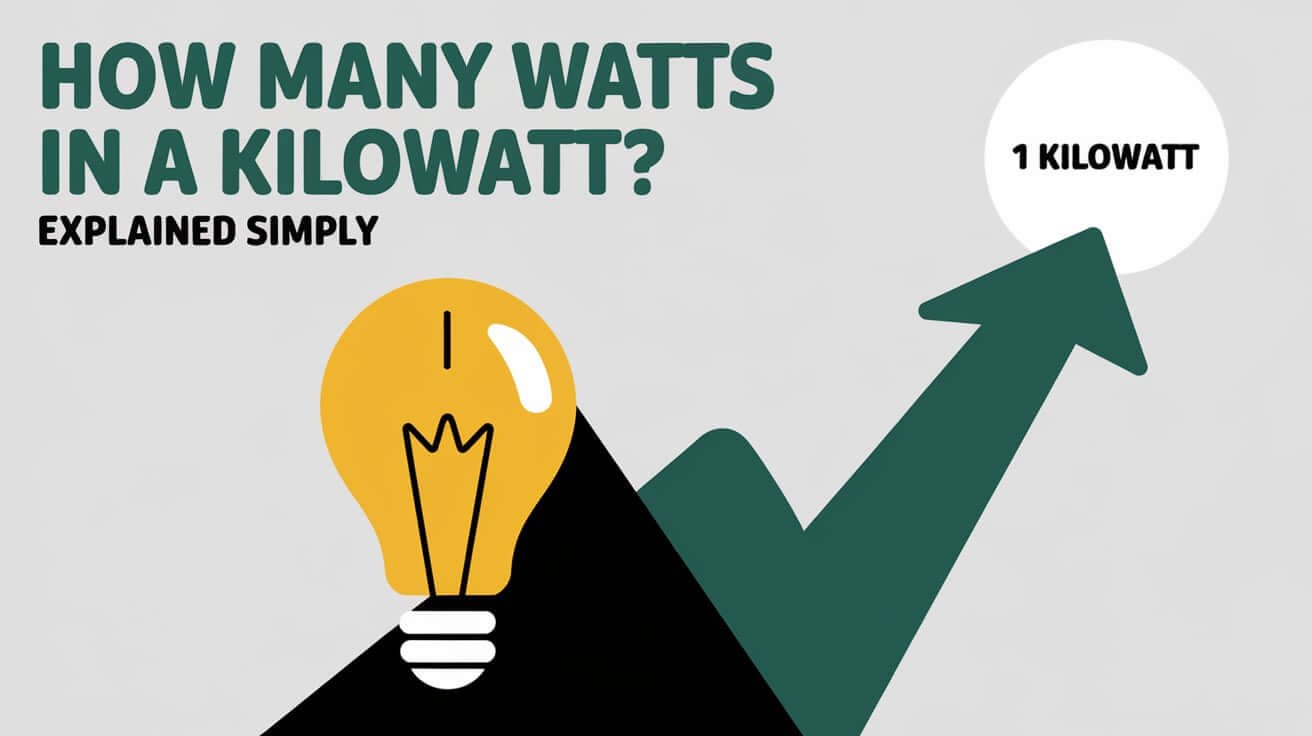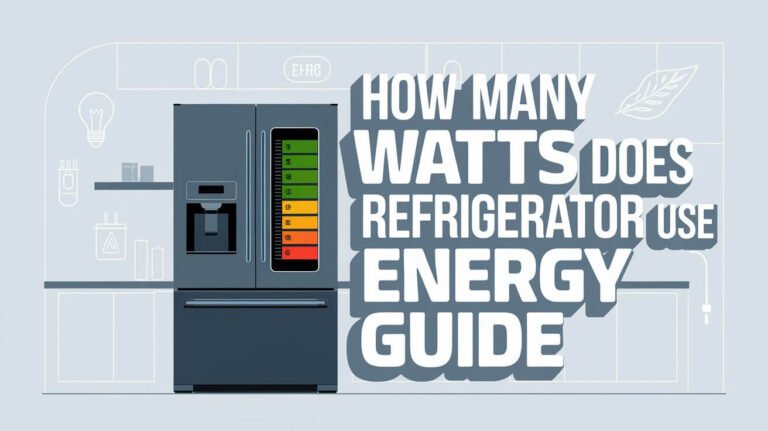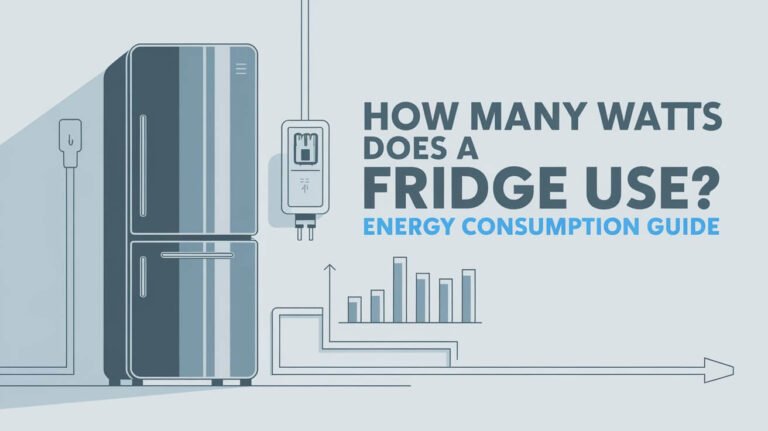
A watt is the basic unit for measuring electrical power. It’s key to understand how watts compare to kilowatts and other power units. The term “watt” comes from James Watt, a Scottish engineer who created the Watt steam engine in 1775.
Watts and kilowatts are important for figuring out energy use and costs. For example, in December 2020, the U.S. saw an average price of 12.80 cents per kilowatt-hour. This helps estimate the cost of using devices that use watts and kilowatts.
In the U.S., most homes need 5,000-7,500 watts, or 5-7.5 kilowatts, for their energy needs. Knowing how watts, kilowatts, and kilowatt-hours relate is vital for calculating energy use and costs. With daily electricity use averaging 29 kWh per household, converting between these units helps save on electricity bills.
Basic Power Unit Relationship
It’s important to know how watts and kilowatts relate. One kilowatt is 1,000 watts. This makes kilowatts key for measuring power use and production. It helps us figure out energy costs and usage.
Understanding electrical power involves unit conversion. This means changing units to measure power. Knowing how to measure power helps us see how much energy we use. It guides us in saving energy.
Definition of Watts
Watts measure electric, thermal, and mechanical power. They show how fast energy is transferred or changed. Watts are basic in many fields.
Definition of Kilowatts
Kilowatts are 1,000 watts of electrical power. They’re used to check how much power appliances, homes, and businesses use. They also measure how much power renewable energy systems can make.
Standard Unit Conversion Rules
To change watts to kilowatts, use this formula: P(kW) = P(W) / 1,000. For instance, 1,500 watts equals 1.5 kilowatts. Knowing these rules helps us measure power and energy use right.
| Unit | Conversion Factor | Example |
|---|---|---|
| Watts (W) | 1 W = 0.001 kW | 1,500 W = 1.5 kW |
| Kilowatts (kW) | 1 kW = 1,000 W | 1.5 kW = 1,500 W |
Knowing the watts to kilowatts relationship helps us use energy wisely. It lets us calculate our energy use and costs. This knowledge is key for managing power and using energy sustainably.
Simple Conversion Formula Between Watts and Kilowatts
To change watts to kilowatts, just divide the power in watts by 1,000. This is shown in the formula P(kW) = P(W) / 1,000. For instance, a 2,000-watt appliance is 2 kW when you divide 2,000 by 1,000.
Understanding how to convert watts to kilowatts is key in energy matters. Solar panels are often measured in kilowatts to show their power. This formula helps figure out how much power these systems produce. Knowing this conversion helps you see how much energy your home or business needs.
Here are some important points to remember when switching between watts and kilowatts:
- 1 kilowatt (kW) is equal to 1,000 watts
- To change watts to kilowatts, divide the power in watts by 1,000
- To change kilowatts to watts, multiply the power in kilowatts by 1,000
| Unit | Conversion Factor |
|---|---|
| Watts (W) | 1 W = 0.001 kW |
| Kilowatts (kW) | 1 kW = 1,000 W |
Learning the power conversion formula and the relationship between watts and kilowatts is vital. It helps you make smart choices about energy use and production. Whether you want to cut down on energy use or invest in solar power, knowing these conversions is critical.
Power Consumption Calculations
Understanding power consumption is key to managing energy well. It’s about how much power devices and appliances use. The wattage of an appliance shows how much power it needs.
In homes, knowing how much power is used helps estimate energy bills. For example, a 100-watt light bulb uses 0.1 kWh per hour. A 1,500 W portable heater uses 6 kWh in 4 hours. Here are some examples of home power use:
Residential Power Examples
- A hot wash, cold rinse laundry cycle uses about 2.3 kWh
- A dryer consumes between 2.5-4 kWh per load
- A 17-cubic-foot Energy Star refrigerator uses only 35 kWh per month
In industries, calculating power use is vital for managing big energy needs. A coal power plant is about 600 MW, which is 600,000 kW or 600,000,000 watts. Knowing how much power appliances use helps save energy and cut waste.
Industrial Power Examples
Industrial power use varies by industry and equipment. For example, a 1.5-ton heat pump rated at 3 kW uses 24 kWh in 8 hours. A furnace with a 10 kW fan uses 120 kWh in 12 hours.
Common Unit Conversion Mistakes
When working with electrical measurements, mistakes in power units can cause errors. It’s key to know the difference between power and energy units. A kilowatt equals 1,000 watts. Also, 1 kilowatt-hour (kWh) means using 1 kilowatt of power for one hour.
To avoid these mistakes, here are some tips:
- Know the difference between power and energy. Power is how fast energy is used or made.
- Be familiar with electrical measurement units like watts, kilowatts, and kilowatt-hours.
- Use the right formulas to figure out energy use and power consumption.
Keeping these tips in mind, you can better understand electrical measurements. This helps in making smart choices about energy use.
| Unit | Definition | Example |
|---|---|---|
| Watt (W) | Unit of power | 100 W light bulb |
| Kilowatt (kW) | Unit of power, equal to 1,000 W | 1 kW = 1,000 W |
| Kilowatt-hour (kWh) | Unit of energy, equal to 1 kW of power used over 1 hour | 1 kWh = 1 kW x 1 hour |
Power Bills and Kilowatt Hours
Utility companies base your electricity bill on kilowatt-hours (units of energy) used each month. One kilowatt-hour is 1,000 watts used for one hour. Knowing how much energy you use is key for managing your bills and tracking power use.
To figure out your electric meter and monthly power use, you need to know appliance energy use. For instance, a 10 kW furnace fan used for 12 hours uses 120 kWh. A 1,500 W portable heater used for 4 hours uses 6 kWh.
Reading Your Electric Meter
Reading your electric meter is easy. Your bill shows total kilowatt-hours used. The average American home uses about 877 kWh monthly. Some places like Hawaii and California use less, while others like Louisiana and Tennessee use more.
Monthly Usage Calculations
To find your monthly usage, use this data:
| Appliance | Energy Consumption |
|---|---|
| Furnace (10 kW, 12 hours) | 120 kWh |
| Portable Heater (1,500 W, 4 hours) | 6 kWh |
| Refrigerator (24 cu. ft, Energy Star) | 54 kWh/month |
Knowing your electricity use, you can track your power use and manage your energy bills better.
Real-World Applications of Watts and Kilowatts
Knowing the difference between watts and kilowatts is key in many real-life situations. It’s important for understanding how we use power and save energy. For example, in the U.S., electricity costs about 13.9 cents per kWh. This means our electric bills are around $100 each month.
This shows how our daily power use affects our lives. Using energy-efficient devices can help lower our bills. Also, people in different states use electricity differently. Louisiana uses the most, while Hawaii uses the least.
| State | Average Monthly Electricity Consumption (kWh) |
|---|---|
| Louisiana | 1,240 |
| Hawaii | 505 |
Looking at these examples and using energy wisely, we can make a difference. This leads to a greener future for all of us.
Power Rating Comparisons Across Devices
It’s key to know how much power devices use. This helps us pick energy-saving options for our homes and work. For example, a 100-watt light bulb used for ten hours uses one kilowatt-hour. This shows why we should think about how long we use things.
Home gadgets like LED TVs vary in power use. A small 22-inch LED TV uses 17W, but a big 65-inch one uses 120-130W. Even smaller devices like the Amazon Echo and Apple TV use less power, at 3W and 3-6W, respectively.
Major Appliances
Big appliances like air fryers, coffee makers, and ovens use more power. An air fryer, for instance, needs 1500W, and a coffee maker uses 800-1400W. These appliances use a lot of energy, so picking energy-saving ones is important.
Industrial Equipment
Industrial gear, like evaporative air conditioners and pressure washers, need a lot of power. An evaporative air conditioner uses 2600W, and a pressure washer uses 1500W. Knowing these power needs helps us save energy in big settings.
| Device | Power Rating (W) |
|---|---|
| 22-inch LED TV | 17 |
| 65-inch LED TV | 120-130 |
| Air Fryer | 1500 |
| Coffee Maker | 800-1400 |
| Evaporative Air Conditioner | 2600 |
Quick Conversion Tips and Tools
To make watt-kilowatt conversions easier, it’s key to have shortcuts and tools. Remember, 1 kilowatt equals 1,000 watts. This helps you quickly switch between watts and kilowatts.
For instance, to change 1,400 watts to kilowatts, just divide by 1,000. This gives you 1.4 kilowatts. This formula works for many situations, making it a great shortcut. Also, energy tools help estimate monthly costs. You can multiply a device’s watts by daily hours, then by 30, and divide by 1,000 to get kWh.
Some other tips include: * Using online tools for conversions * Downloading apps for energy calculations * Making a cheat sheet for common conversions * Practicing conversions often to get better
| Watts | Kilowatts |
|---|---|
| 1,000 | 1 |
| 1,400 | 1.4 |
| 2,000 | 2 |
Learning these shortcuts and using energy tools, you’ll handle watt-kilowatt conversions easily. This makes managing your energy use and costs simpler.
Final Thoughts
Understanding watts and kilowatts is key to smart energy use. It helps you make better choices about how much energy you use and how much it costs. Knowing how these units work lets you control your energy use better, at home, work, or in big projects.
This knowledge helps you figure out how much power your appliances use. It also helps you plan for energy needs in green projects. By using watts and kilowatts wisely, you can save money and help the planet.




